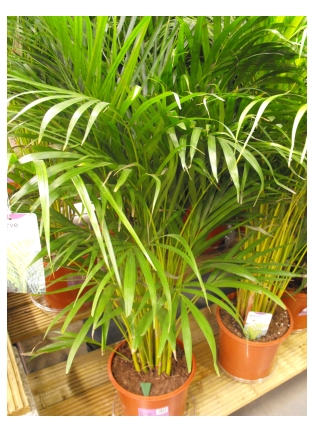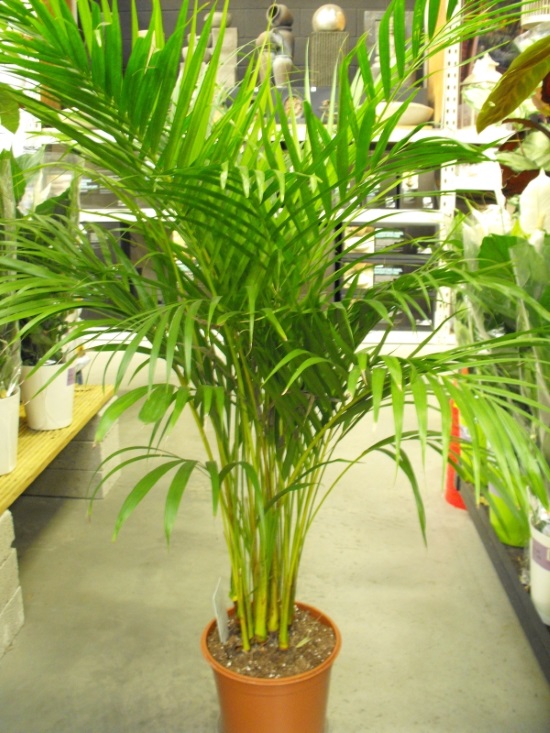





The areca is known as a cane type palm because of the bamboo cane looking stems once it's matured. They're also very similar to the feather types (especially the kentia palm) that display similar leaflets (leaves) and grows up to about the same height indoors.
Displaying: An attractive species that prides itself in improving home or office décor and makes a great focal point for large rooms, hallways, reception areas and conservatories. Many sold are about 5ft tall making them a good choice for growers that require an indoor tree type plant. As long as your able to provide enough light and warm enough temperatures your palm will thrive wherever you decide to display it.
Easy to grow: Most people find growing and maintaining this undemanding plant easy enough. One of the worst things a grower can do is overwater and allow water to stagnate near the root system, otherwise they're a real pleasure to grow.
Cleaner air and non-toxic for pets: All plants clean air borne toxins for us to breath in healthier oxygen, but palms (including the dypsis lutescens) was named as one of the best air purifying plants, after a scientific clean air study was completed by Wolverton and Nasa.
ASPCA (American Society for the Prevention of Cruelty to Animals) state this plant is non-toxic to cats and dogs if ingested.


BUY HERE »
See the palms page for potential
problems and other palm trees »
Copyright © www.100flowers.win Botanic Garden All Rights Reserved